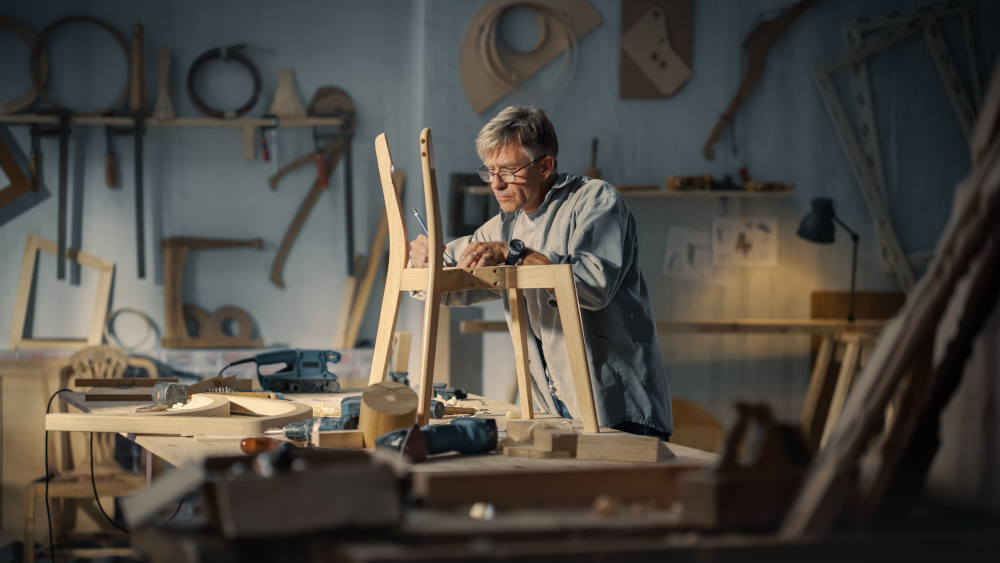Sustainability in Mid-Century Design
- Written by Modern Australian

In an era marked by an increased focus on sustainability and eco-conscious living, the allure of quality mid-century furniture stands tall. Beyond its aesthetic appeal and timeless design, mid-century pieces hold a unique and often overlooked quality—sustainability. These vintage treasures embody principles of longevity, quality craftsmanship, and eco-friendly materials that align seamlessly with modern sustainability goals.
Craftsmanship: A Testament to Timelessness
Mid-century furniture embodies a meticulous craftsmanship that elevates it to an art form. Each piece is a testament to the dedication and skill of the artisans who carefully sculpted, joined, and finished them. The emphasis was not merely on creating furniture but on crafting enduring pieces of functional art. Techniques like hand-joining, dovetailing, and hand-finishing were commonplace, resulting in furniture that exuded quality and durability.
These artisans, often deeply connected to their craft, instilled a sense of pride and dedication into every detail of the furniture they created. The craftsmanship was not rushed; it was a patient process that resulted in pieces designed to withstand the test of time.
Sustainable Material Selection: Honoring Nature's Integrity
Mid-century designers were forward-thinkers in their choice of materials, valuing sustainability long before it became a mainstream concern. The woods they selected—teak, walnut, rosewood, and others—were not just for their aesthetics but also for their resilience and sustainability. These woods were responsibly sourced, often from forests managed with a commitment to preserving ecosystems and promoting regeneration.
Beyond wood, the textiles used in mid-century furniture were often organic and natural, promoting breathability and longevity. Wool, linen, and leather were preferred for their ability to age gracefully, developing a patina over time that added character while remaining biodegradable, minimising environmental impact at the end of their lifecycle.
Legacy in Every Detail
Mid-century furniture pieces tell a story not just of their design but of the materials they are made from. The visible grains in the wood, the subtle variations in textiles, and the expertly crafted joints—all speak of a dedication to quality that transcends generations. This emphasis on longevity and sustainability wasn't just a passing trend; it was a philosophy deeply ingrained in every facet of the furniture-making process.
Continuation of a Sustainable Legacy
The legacy of mid-century furniture goes beyond aesthetics; it's about embracing a sustainable way of living. In today's world, where the environment is a pressing concern, the principles embedded in mid-century design offer a roadmap. By cherishing and continuing this legacy, individuals not only bring timeless elegance into their homes but also contribute to a more sustainable future—one where craftsmanship and material integrity coexist harmoniously.
Timelessness: A Weapon Against Waste
Mid-century furniture's enduring appeal lies in its ability to defy the transient nature of trends. These designs don't just withstand the test of time; they remain relevant and sought after across decades. By investing in vintage mid-century pieces, individuals make a conscious choice to steer away from the cycle of fast furniture turnover, thus reducing furniture waste and consumption.
Restoration and Upcycling: Breathing New Life
One of the most eco-friendly aspects of mid-century furniture is its resilience and potential for restoration. Worn-out pieces that might otherwise be discarded can be revitalised through careful restoration and upcycling efforts.
Skilled craftsmen can repair, refinish, or reupholster these pieces, giving them a new lease on life. This not only preserves their historical and aesthetic value but also significantly reduces the environmental impact by diverting items from landfills.
Incorporating Mid-Century Sustainability Today
Bringing mid-century sustainability into modern living spaces is a thoughtful and responsible choice. Careful curation of timeless mid-century pieces that align with sustainable values can be the cornerstone of a conscious interior design approach. Mixing these vintage gems with contemporary, eco-friendly elements allows for the creation of spaces that seamlessly blend history with modernity while championing sustainability.
Integrating mid-century sustainability doesn't just stop at furniture selection. Consider adopting eco-conscious practices like choosing low-VOC paints, energy-efficient lighting, and sustainable textiles to complement these vintage pieces. Embracing minimalism and opting for quality over quantity can further enhance the eco-friendly aspect of the space.
Conclusion
The timelessness of mid-century furniture serves as a powerful ally in the fight against waste and overconsumption. Its enduring appeal reduces the need for constant replacements, thereby lessening furniture waste. Moreover, the potential for restoration and upcycling allows for a sustainable approach to preserving these iconic pieces.
By consciously incorporating mid-century sustainability into contemporary living spaces, individuals not only honour the craftsmanship and design of a bygone era but also contribute to a more eco-conscious lifestyle. It's a fusion of heritage and modernity, where sustainability becomes an integral part of creating spaces that are both stylish and responsible.

























